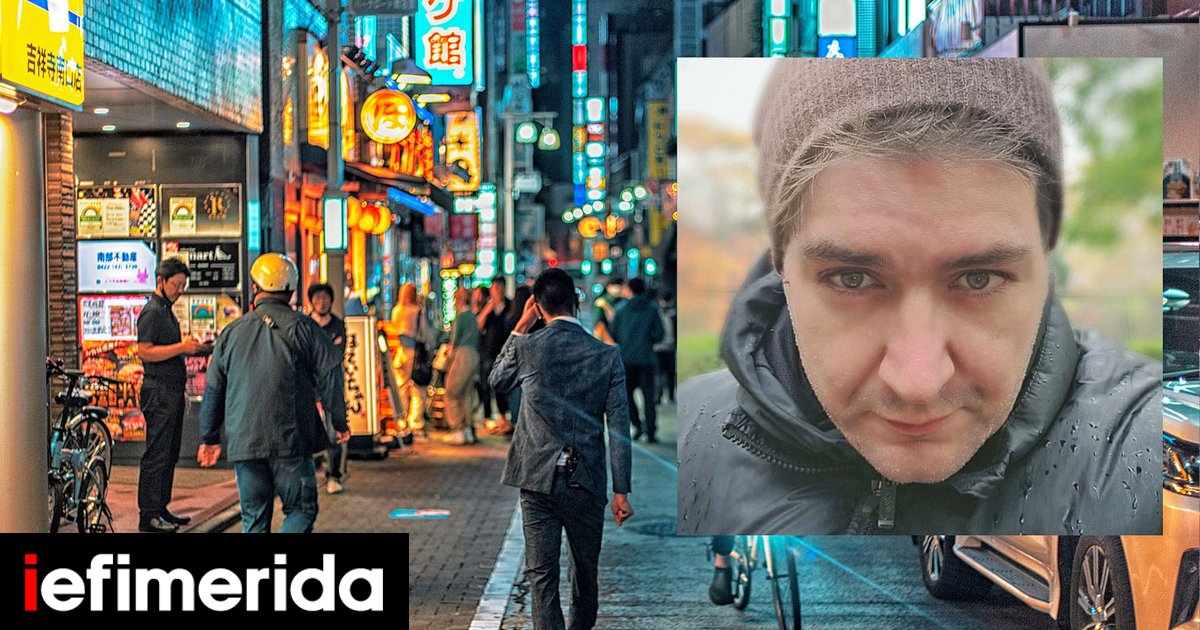
Tokyo-based Greek educator and writer, Stelios Prezirakos, travels to Japan He introduces his fanatical followers to Japanese culture.
What do Japanese men imagine in the world of animation? Why are there religious symbols at the bottom of many doors? But do the Japanese eat insects? And how does it happen that such a developed country still can’t speak English properly?
He gives the answers himself in his own unique way.
In the capital of anime, otaku and manga
Akihabara is the capital of anime, otaku and manga: it is not for adults like Koenji or for young people like Harajuku. In Akihabara, you’ll find elementary school students, college students, heads of families, and retirees crammed into the same stores looking at the same things. And 99% of the time, these things have huge boobs, tiny waists, baby faces, and long (!) legs.

Biology suggests that in mammals large mammals play exactly the same role as the feathers of male birds, that is, they are a way to attract the opposite sex. This of course depends on the culture and time – for example in Japan in the Edo period, the female breast had no particular sexual value and was simply considered a tool for raising your children. In contrast, men found a woman’s neck or wrists alabaster protruding from the sleeve of a charming kimono. In Shunga (pornography at the time) women’s breasts are rarely depicted and when they are, they are small and uninteresting. The Japanese obsession with big breasts began with the American Invasion, where manga artists began drawing female characters with unnaturally large breasts as this would sell better to foreigners.
World Cup 2022: moral lessons from the Japanese – they collected all the rubbish from the stands [εικόνες & βίντεο]
A Greek teacher in Japan describes the school there – another world, six days, students cleaning up
A simple staircase in the electric city of Akihabara shows how much sexual mores have changed. In the anime world, a woman or girl with big breasts is more confident, assertive, protective, and usually takes the initiative. Women with small breasts are seen as shyer (for example, the image of the librarian has small, almost masculine breasts), insecure, problematic, and innocent in a simplistic sense of naivety.

insects in Japan
It will sound strange, but the Japanese have the same tradition of eating insects as the peoples of South Asia. Nowadays, the use of pesticides and abundant food has completely disappeared from this habit (why eat cicadas when you can eat pizza?) But in some stores you can still find such traditional snacks.
Skewers of crickets, grilled worms with rice, and dried silkworm cocoons delight both Japanese and Europeans today. But in the final analysis, the real freedom for many people lies in breaking the culturally imposed gastrointestinal bonds. As written on the snack packages in the photo, “The insects will save the future. Eat me!”.

Why do the Japanese put religious symbols on the doors?
The door in the photo is from a side street in Kichijoji, next to one of the thousands of bars in the area. The arrow indicates the subject of the post, which is the Shinto torii bracket below the door. Why should something so sacred, even so low?
The answer has nothing to do with religiosity but with cleanliness: the small torii gate is there to protect against dogs (because the owners wouldn’t dare let them pee on the door), drunks (who would think of littering near the symbol of the local deity) or those who like to leave their waste there. In Japan this trick is spreading!

They still don’t speak English very well
Many years have passed, but Japlish (Japanese English) still reigns supreme. “You are not allowed to park your bike there.”

More videos

“Hipster-friendly coffee fanatic. Subtly charming bacon advocate. Friend of animals everywhere.”





More Stories
F-16 crashes in Ukraine – pilot dies due to his own error
Namibia plans to kill more than 700 wild animals to feed starving population
Endurance test for EU-Turkey relations and Ankara with Greece and Cyprus